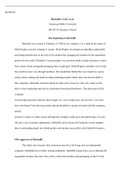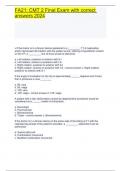Resume
Summary C121 Task 2.docx C121 C121 Task 2 BVM2 Western Governors University Survey of United States History C121 Task 2 BVM2 A. Rise in Partisan Politics Since the country was deep in debt because of war and battles, the tax on states continually increas
- Cours
- Établissement
C121 Task C121 C121 Task 2 BVM2 Western Governors University Survey of United States History C121 Task 2 BVM2 A. Rise in Partisan Politics Since the country was deep in debt because of war and battles, the tax on states continually increased. This created the first party system having two...
[Montrer plus]












